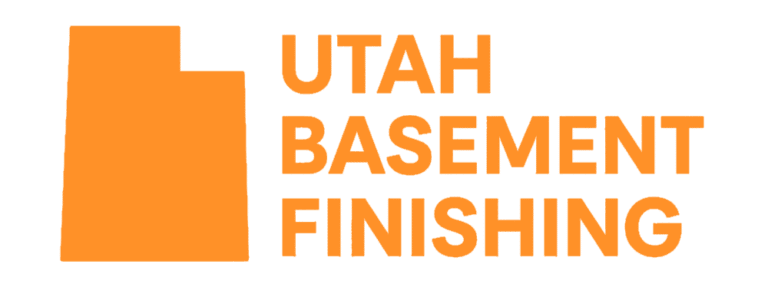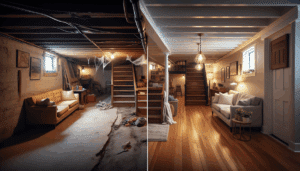At Utah Basement Finishing, we know that a basement can be a homeowner’s pride and joy, or a source of endless frustration. Let’s face it, without proper insulation, your basement could be a chilly, energy-draining dungeon. That’s precisely why we’re here to guide homeowners like you towards a more comfortable and energy-efficient space. In this article, we dive into the top methods for insulating your basement, empowering our Utah community to make informed decisions that keep comfort in and cold drafts out.
Contents
- 1 Understanding the Importance of Basement Insulation
- 2 S types of Insulation Materials
- 3 Fiberglass Insulation: A Cost-Effective Option
- 4 Benefits of Spray Foam Insulation
- 5 Advantages of Rigid Foam Board Insulation
- 6 The Role of Vapor Barriers
- 7 DIY vs Professional Installation
- 8 Common Insulation Mistakes to Avoid
- 9 Inspecting Your Current Insulation
- 10 Embarking on Your Insulation Journey
Understanding the Importance of Basement Insulation
Let’s start by understanding why insulating your basement is a game-changer. Effective insulation is not just about keeping your space warm; it’s also about energy efficiency and reducing those pesky utility bills. When your basement is well-insulated, it acts as a thermal buffer, maintaining a consistent temperature throughout your home. This means you’ll not only enjoy a cozier basement but also a more stable overall indoor climate.
Another reason to prioritize insulation is to prevent moisture-related issues, which can lead to mold and structural damage. Inadequate insulation often results in high humidity levels, making it a breeding ground for these problems. By tackling this head-on, you’re not just taking care of your home’s health, but your family’s well-being too.
S types of Insulation Materials
When it comes to basement insulation, one size definitely does not fit all. There are various types of materials you can choose from, each with its own set of advantages. Each homeowner can pick the right fit based on their specific needs and budget.
Let’s explore a few popular options. Fiberglass is perhaps the most common choice due to its affordability and ease of installation. Then there’s spray foam, which offers excellent insulation but can be a bit pricier. Rigid foam panels provide incredible thermal resistance and are great for surface applications. By evaluating these materials, you can find the one that best aligns with your insulation goals.
Fiberglass Insulation: A Cost-Effective Option
Fiberglass insulation is a tried-and-true method that many homeowners love for its blend of affordability and efficiency. It’s made of fine glass fibers that trap air, thus slowing heat flow. This results in a warmer and more energy-conscious home environment.
Installing fiberglass is fairly straightforward and can often be a DIY project if you’re feeling adventurous. It’s important to ensure that it’s properly fitted to avoid any gaps, which could compromise its effectiveness. Plus, it’s advisable to handle it with care, as the fibers can be irritating to your skin and respiratory system.
Benefits of Spray Foam Insulation
Spray foam insulation is increasingly popular among homeowners seeking superb thermal resistance and moisture control. This material expands upon application, creating an airtight seal that is hard to achieve with other insulation types. It fills gaps, cracks, and even hard-to-reach spaces, delivering a comprehensive barrier.
Although spray foam tends to be more expensive upfront, its long-term benefits can outweigh initial costs. For one, it contributes to significant energy savings, which can accumulate over time. Additionally, its moisture-resistant properties reduce the risk of mold, ensuring a healthier home environment.
Advantages of Rigid Foam Board Insulation
Rigid foam boards offer another fantastic option, especially for homeowners keen on high thermal resistance. These panels are typically made of polystyrene, polyurethane, or polyiso, and have a higher R-value per inch than traditional insulation options.
One of the major advantages of rigid foam is its versatility in application. It can be installed on walls, floors, and ceilings, providing a dependable airtight layer. Plus, it’s highly resistant to moisture, making it a durable choice for basement environments.
The Role of Vapor Barriers
A discussion on basement insulation wouldn’t be complete without mentioning vapor barriers. These serve as a crucial layer in preventing moisture from seeping through walls and floors, potentially wreaking havoc on your insulation and home structure.
Applying a vapor barrier can prevent condensation-related issues, such as mold growth and wood rot. It’s often installed alongside other insulation materials to boost their effectiveness, creating a comprehensive envelope that shields your basement from moisture.
DIY vs Professional Installation
As a homeowner, you might be tempted to tackle insulation as a DIY project, but is it always the best approach? Let’s weigh the options. While many types of insulation can be installed quickly with the right tools and guidance, some methods, like spray foam, require professional expertise to ensure optimal application.
Hiring professionals, like our team at Utah Basement Finishing, guarantees not only correct installation but also peace of mind. You’ll benefit from industry knowledge, which leads to long-term savings and satisfaction. At the end of the day, it often pays to invest in professional quality, especially for something as crucial as basement insulation.
Common Insulation Mistakes to Avoid
When it comes to insulation, even small mistakes can have big consequences. Here are a few pitfalls to avoid on your journey to a cozy basement:
- Skipping the Vapor Barrier: This can lead to moisture problems, which impact the longevity and effectiveness of your insulation.
- Ignoring Air Leaks: Ensure your basement is sealed properly to maximize energy efficiency.
- Choosing the Wrong Insulation Material: Match the insulation type to your specific basement needs for optimal results.
- Improper Installation: Gaps and misalignments reduce the efficiency of your insulation.
- Neglecting Building Codes: Always adhere to local building codes to avoid future headaches.
Inspecting Your Current Insulation
Before investing in new insulation, it’s essential to assess your existing setup. This helps identify areas where improvements are necessary and allows you to make informed decisions moving forward. Begin by closely examining your basement for any current insulation. Check for signs of moisture damage, such as stains or mold, and test for drafts to see if your current insulation is doing its job.
Hiring a professional inspection can also give you a clear picture of what needs changing. Sometimes, a complete overhaul may not be necessary – a few targeted improvements could make a world of difference in your basement’s comfort and energy efficiency.
Embarking on Your Insulation Journey
In conclusion, insulating your basement is a pivotal step toward a more comfortable and efficient home. Whether you opt for fiberglass, spray foam, or rigid foam panels, the right insulation can transform your space into a haven of warmth and savings. At Utah Basement Finishing, we’re committed to guiding our community through each stage of their insulation journey. Connect with us today, by phone at 801-515-3473 or Request a Free Quote, and let’s make your basement the envy of the neighborhood.




